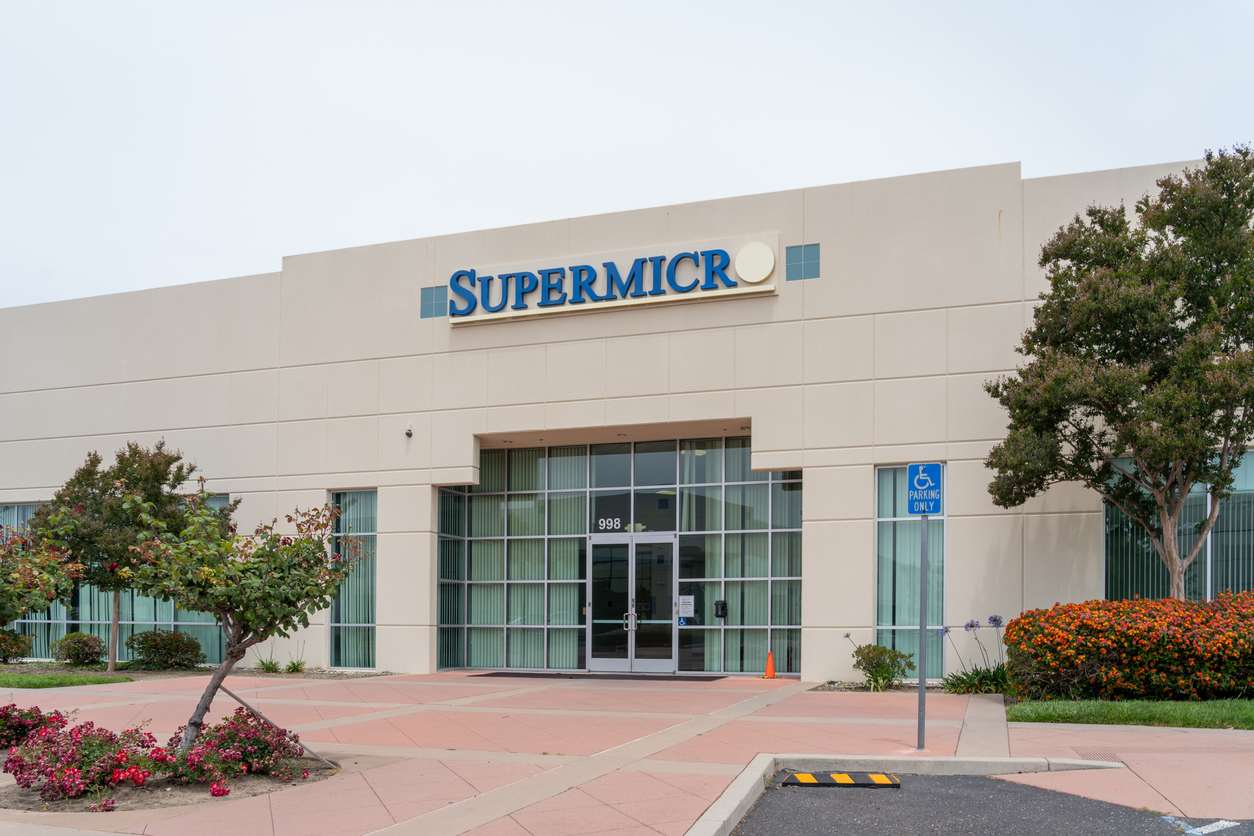Opinion: Super Micro’s stock price may already fully reflect the AI boom — but still has legs

Shares of Super Micro Computer Inc., the once little-known server maker that has rocketed higher over the past year, may already fully reflect the company’s ability to cash in on the artificial-intelligence craze.
Super Micro’s stock
SMCI,
is up about 200% so far this year and up 800% over the past 12 months, reflecting enthusiasm for the company’s growth and its early relationship with AI darling Nvidia Corp.
NVDA,
But the stock market’s AI euphoria is calling to mind the dot-com bubble for some investors — raising the question of where Super Micro fits into the current landscape.
Read also: AI has given a big boost to this lesser-known Silicon Valley computer maker.
How Super Micro’s valuation stacks up to its peers depends on who you actually consider to be the company’s peers. While the stock — now trading at 33.9 times estimated adjusted earnings estimates for calendar 2024, and 40.4 times its fiscal 2024 earnings estimates — looks expensive when stacked up against more direct hardware rivals, it seems fairly valued relative to hot chip stocks like Advanced Micro Devices Inc.
AMD,
Super Micro “went from a commodity valuation of HP and Dell and finally caught up with the AI peers,” Beth Kindig, lead industry analyst at the I/O Fund, said. “I don’t think it’s the market’s exuberance; it’s the market’s efficiency.”
In looking at other companies that develop computer servers, Dell Technologies Inc.
DELL,
currently trades at about 13.1 times its calendar 2024 earnings, and Hewlett Packard Enterprise
HPE,
trades even lower, at 7.7 times its calendar 2024 earnings estimates, according to FactSet.
Right now, Super Micro is seen as more unique than its server rivals thanks to some of its technologies and features, including water cooling that helps cool down graphics accelerators in high-performance data centers. The company’s building-block architecture also makes it easy to swap out server racks for new upgrades, and its time to market is typically fast.
“They do tend to be faster than other major vendors in terms of getting new technologies installed into their product catalog,” IDC analyst Kuba Stolarski said in an email. “I assume that custom orders would also be designed and delivered quickly. Much of their success in the last couple of years has been with hyperscalers and other very large customers.”
Both HPE and Dell talked about servers for the AI boom in their earnings calls in November, and while they haven’t seen as much revenue as Super Micro yet, they are actively pursuing the rich market.
For example, Dell said it shipped $500 million in AI-optimized servers in its fiscal third quarter that ended in October 2023. Super Micro said half of its total revenue of $3.66 billion in the December quarter was from AI, and raised its 2024 revenue forecast to a range between $14.3 billion and $14.7 billion. Dell and HPE will report results for the January quarter later this week.
Right now, investors appear to be looking at Super Micro as part of a group of AI-related chip companies that are developing products dedicated to accelerating AI. Valuations for those stocks run the gamut, though, with Nvidia trading at around 33.2 times its calendar 2024 estimates.
Shares of AMD, which has become a second-favorite to Nvidia with its own GPU chips, currently trades around 48.3 times its 2024 earnings estimates. Broadcom Inc.
AVGO,
in contrast, which also develops custom AI accelerators, is seeing its stock trading at 27.2 times its calendar 2024 earnings estimates.
“Super Micro is probably fairly valued at this point,” Kindig said. For her, the big question right now is when it will become a gamble. “We have been in it since May of last year. We think it is getting to the point where the risk-reward is too high-risk.”
Investors may be thinking hard about Super Micro’s place in the current cycle as more on Wall Street question whether they are seeing shades of the past. There’s growing concern from some that high-flying stocks like Nvidia and Super Micro could come to resemble what Sun Microsystems or Cisco Systems Inc.
CSCO,
were to the dot-com bubble.
Sun Micro, it is worth remembering, sold high-end, proprietary servers that became popular for running websites during the early build-out of the internet boom. Its stock and revenue soared until 2001, when startups — many of them Sun customers — started to fail after spending beyond their means, and Sun began to report losses. In addition, the lower-cost servers based on chips from Intel Corp.
INTC,
and AMD started to catch up to the performance of Sun’s servers, driven by its proprietary SPARC chips. Sun was ultimately purchased by Oracle Corp. in 2009.
“Sun’s experience helps highlight that upstream hardware vendors often see much more violent swings than end-user demand,” Bernstein Research analysts said in a note last July.
Super Micro executives and several Wall Street analysts still see a bright future ahead for the company and the stock.
Chief Executive Charles Liang told Bloomberg TV last week that the company has the capacity to support up to $25 billion in revenue an an annual basis, but that it is still supply constrained. Last month, Super Micro raised its annual revenue forecast for fiscal 2024 to $14.3 billion to $14.7 billion, just more than double that of 2023.
On Super Micro’s last earnings call, Liang said he saw the AI boom continuing for “another many quarters, if not many years.”
Probably the biggest bull on the stock is Hans Mosesmann of Rosenblatt Securities, who raised his price target to $1,300 last week.
“Key to the story is for investors to consider that the company is benefiting not only from secular AI growth (over 50% CAGR [compounded annual growth rate over next several years], but material share gains,” Mosesmann said in a note. Indeed, according to the latest server market-share data provided by IDC for the third quarter, Super Micro is now the No. 4 server maker worldwide, after leaping ahead of China’s Lenovo Group in the second quarter.
But Super Micro is still in a low-margin business. Its non-GAAP gross margins fell sequentially to 15.5% from 17%, and guided to slightly lower gross margins in the fiscal third quarter from the second. Mosesmann, though, forecast that Super Micro’s GAAP earnings per share could jump to $19.96 in fiscal 2024, $32.78 in fiscal 2025 and $41.93 for fiscal 2026.
Aaron Rakers, a Wells Fargo analyst, sounded a cautionary tone about the growing competition in the AI server arena. He pointed to the “expanding AI server backlog” at both Dell and HPE, while noting that Taiwanese original-device manufacturers as getting increasingly competitive.
It’s still impossible to tell yet if the boom is close to peaking. Some investors are clearly getting more nervous about Super Micro, with data from S3 filings showing that short interest was about 14% of the company’s stock float as of Feb. 26, up from 11.6% a week before.
Meanwhile, Nvidia, which has danced with a $2 trillion valuation in recent days and was described by Bernstein’s Stacy Rasgon recently as “not that expensive,” might be a safer bet.
Super Micro, a much smaller company, currently has a much lower market cap of about $48 billion, but Rakers at Wells Fargo believes investors are already baking in the Street’s current growth projections. How long can it hold its competitive advantage? That’s the key question for investors to be asking right now.
Source link





